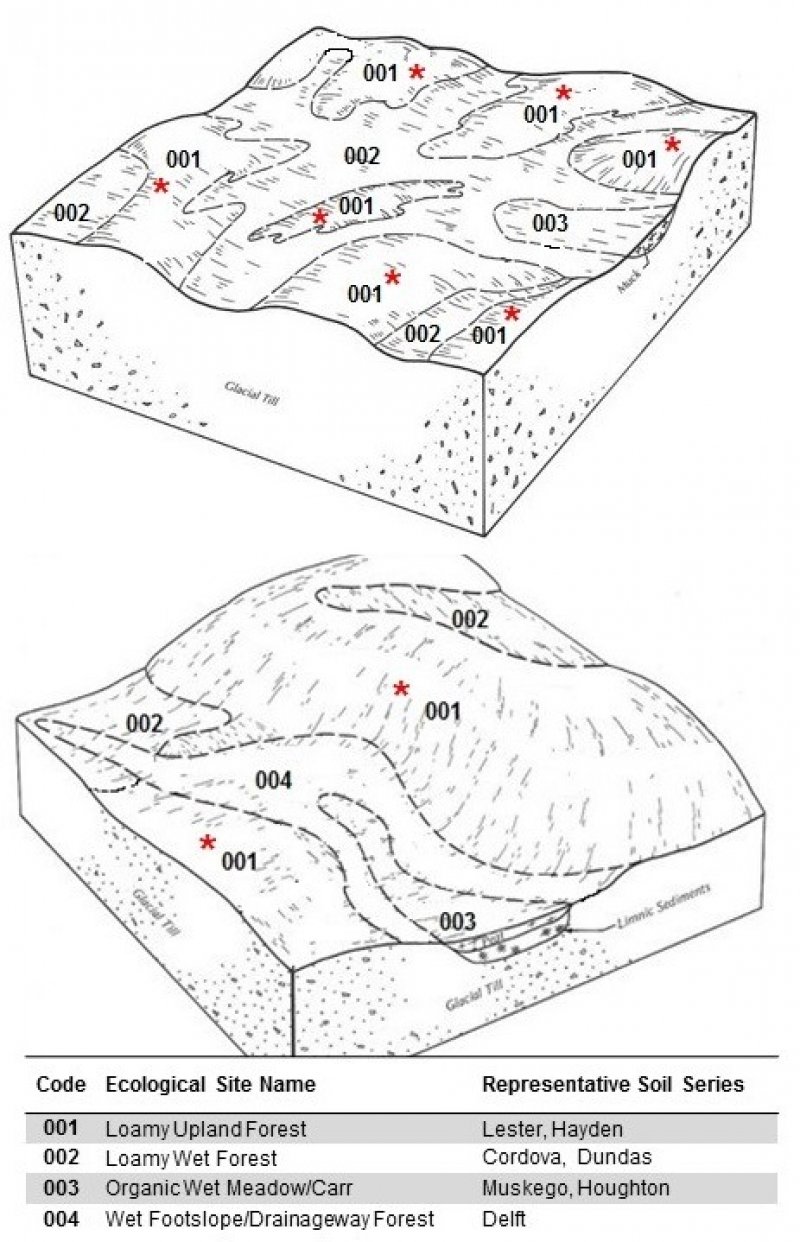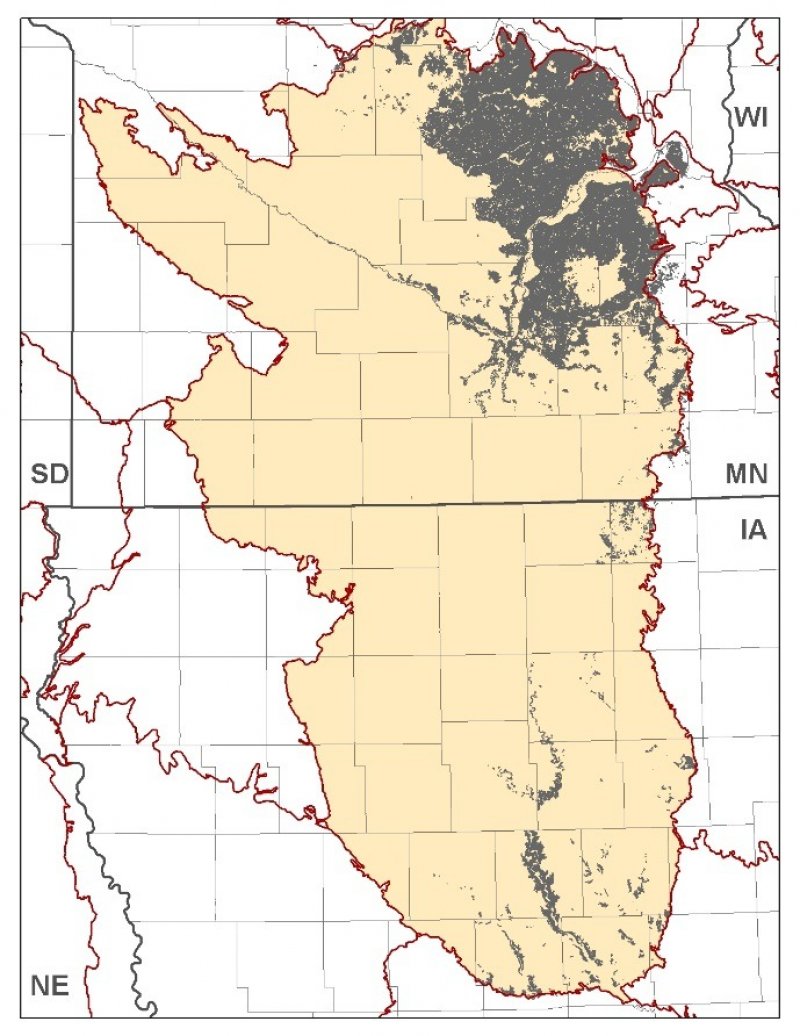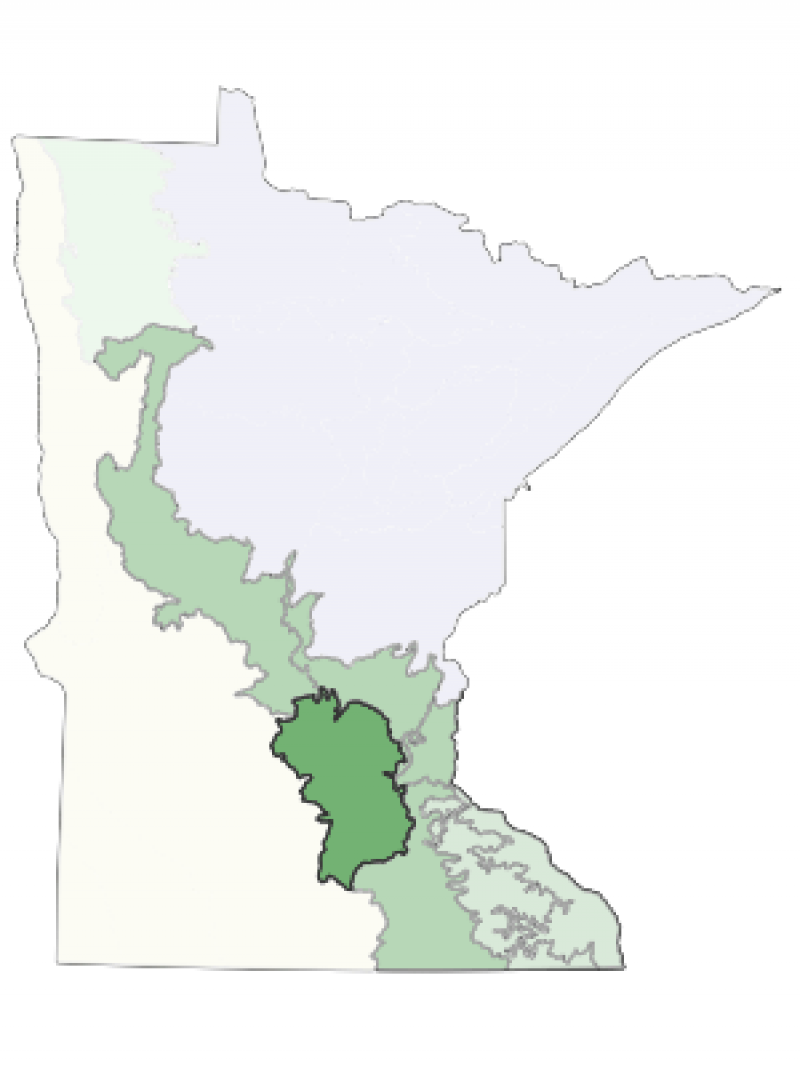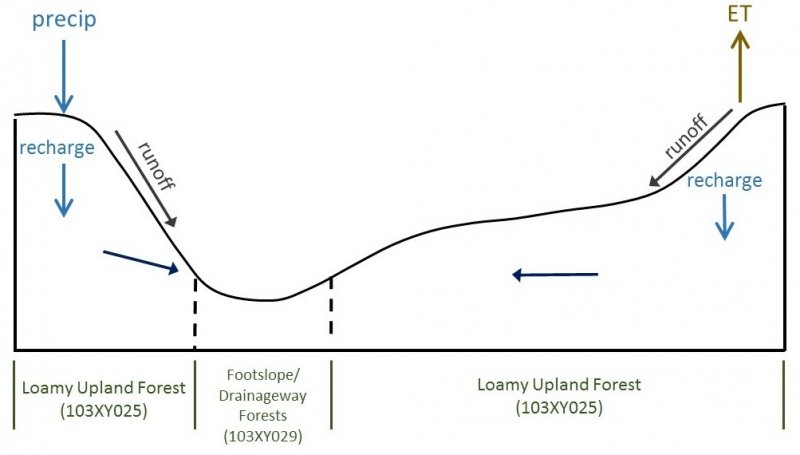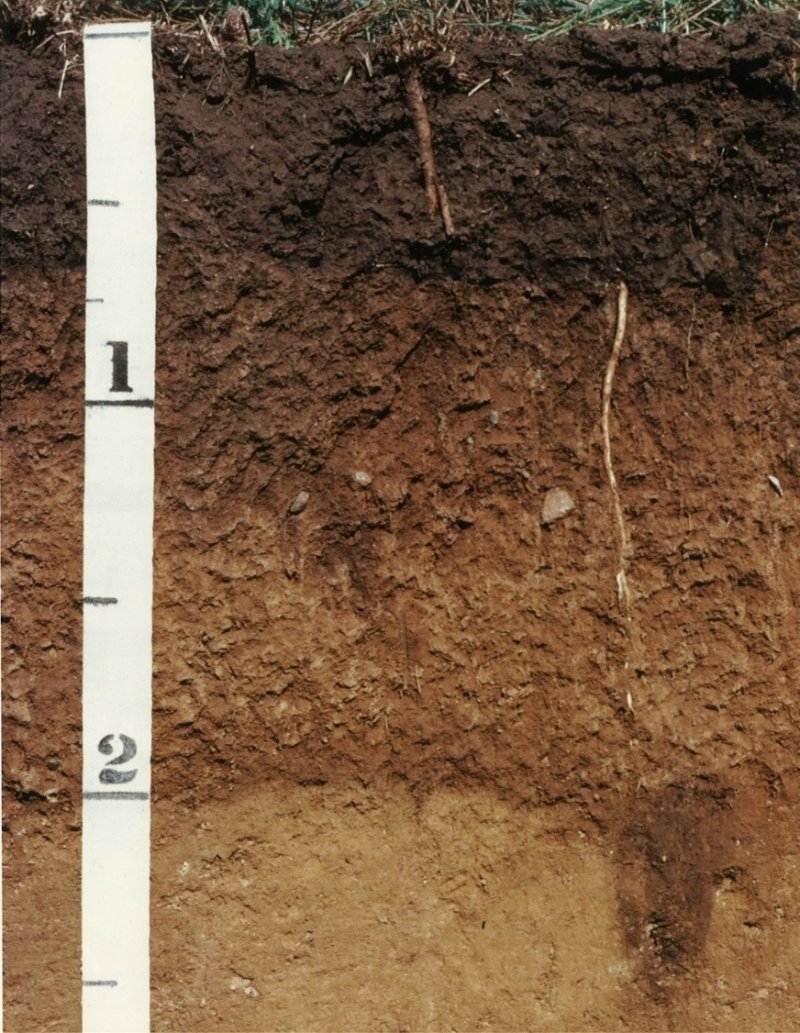
Natural Resources
Conservation Service
Ecological site F103XY025MN
Loamy Upland Forests
Last updated: 10/04/2023
Accessed: 01/10/2025
General information
Provisional. A provisional ecological site description has undergone quality control and quality assurance review. It contains a working state and transition model and enough information to identify the ecological site.
MLRA notes
Major Land Resource Area (MLRA): 103X–Central Iowa and Minnesota Till Prairies
MLRA 103 is in Minnesota (56 percent) and Iowa (44 percent) and consists of approximately 18 million acres. It is in the Western Lake Section of the Central Lowland Province of the Interior Plains in an area known as the "Des Moines Lobe" of the Wisconsin-age ice sheet.
The MLRA is mostly on a young, nearly level to gently rolling, glaciated till plain that has moraines and glacial lake plains in some areas. The plain is covered with glacial till, outwash, and glacial lake deposits. Recent alluvium consisting of clay, silt, sand, and gravel fill the bottoms of most of the major river valleys. Paleozoic bedrock sediments, primarily shale and limestone, underlie the glacial deposits in most of the area.
The annual precipitation increases from northwest to southeast. Most of the rainfall occurs as high-intensity, convective thunderstorms during the summer. Two-thirds or more of the precipitation falls during the freeze-free period. Snowfall is common in winter. Ground water supplies are adequate for the domestic, livestock, municipal, and industrial needs. Nearly all of this area is farmland, and about four-fifths is cropland.
Classification relationships
U.S. Department of Agriculture (USDA)
Land Resource Regions and Major Land Resource Areas (USDA NRCS, 2006)
Major Land Resource Area (MLRA): Central Iowa and Minnesota Till Prairies (103)
U.S. Forest Service (USFS)
National Hierarchical Framework of Ecological Units (Cleland et al.,2007)
Section: North central Glaciated Plains (251B)
Subsections: Upper Minnesota River-Des Moines Lobe (251BA) and Southern Des Moines Lobe (251Be)
International Vegetation Classification Hierarchy (NatureServe)
Class: 1 Forest & Woodland
Subclass: 1.B Temperate & Boreal Forest & Woodland
Formation: 1.B.2 Cool Temperate Forest & Woodland
Division: 1.B.2.Na Eastern North American Forest & Woodland
Relationship to Other Established Classifications:
This ecological site shares similarities with Minnesota Department of Natural Resources MHs38 Southern Mesic Oak-Basswood Forest; MHs39 Southern Mesic Maple-Basswood Forest
Ecological site concept
The Loamy Upland Forests ecological site is located on upland soils that have relatively thin epipedons, loamy textures, and argillic subsurface horizons. These soils were formed predominantly under forest vegetation and are classified as Alfisols. This ecological site does not pond or flood.
Associated sites
| F103XY030MN |
Wet Footslope/Drainageway Forests The Wet Footslope/Drainageway Forests ecological site is located on lower footslopes or in wet drainageways. The soils are somewhat poorly drained to poorly drained. This site is lower on the landscape and wetter than the Loamy Upland Forests site. |
|---|---|
| F103XY027MN |
Loamy Wet Forests The Loamy Wet Forests ecological site is located on footslopes and toeslopes. The soils have a dark surface layer (mollic epipedon) and are poorly drained. The soils are derived from fine loamy till, so have a loamy surface texture. This site is located lower in the landscape than the Loamy Upland Forests site. |
| R103XY017MN |
Organic Wet Meadow/Carr The Organic Wet Meadow/Carr ecological site occurs in low wetland areas. These sites are ponded, have a high water table (i.e., endosaturated) and are classified as very poorly drained. Water-tolerant vegetation such as cattails, bulrushes, and sedges are dominant. |
| F103XY036MN |
Depressional Wet Forests The Depressional Wet Forests ecological site is characterized by a water table that is typically above the soil surface (ponded) during the spring months and may drop to as low as three feet later in the growing season during dry periods. The included soils are classified as Cumulic Endoaquolls that developed under forest vegetation and have a thick accumulation of slope alluvium. |
| R103XY018MN |
Shallow Lakes The Shallow Lakes ecological site is ponded in a natural state. Soils are poorly drained and endosaturated. Characteristic vegetation includes waterlily, coon's tail, and soft stem bulrush. |
| R103XY014MN |
Recharge Depressions The Recharge Depressions ecological site ponded in the natural state and soils are classified as very poorly drained. Soils have a relatively high organic matter content in the surface and near surface horizons. Hydrologic interactions with adjacent sloping ground classifies this site as a recharge wetland. |
| F103XY024MN |
Sandy Upland Forests The Sandy Upland Forests ecological site is located on soils that have a surface texture of loam, sandy loam, or sand and have a layer of sandy or gravelly material below the surface horizon. These soils were formed predominantly under forest vegetation. |
| F103XY029MN |
Footslope/Drainageway Forests The Footslope/Drainageway Forest ecological site is located on end and lateral moraines within the northeastern part of MLRA 103. Sites are in drainageways and on footslopes, but generally do not flood or pond. |
Similar sites
| F103XY024MN |
Sandy Upland Forests The Sandy Upland Forests ecological site is located on uplands. Soils are derived from loamy-mantled outwash and outwash over till. Soil texture is course loamy. Soil drainage class is moderately well drained to well drained. |
|---|
Table 1. Dominant plant species
| Tree |
(1) Quercus rubra |
|---|---|
| Shrub |
(1) Ostrya virginiana |
| Herbaceous |
(1) Thalictrum thalictroides |
Click on box and path labels to scroll to the respective text.
Ecosystem states
| T1A | - | Site is cleared, tilled, seeded, and managed for crop production |
|---|---|---|
| T1B | - | Site incurs large-scale disturbance and altered plant community |
| R3A | - | Restoration inputs include desired species establishment, disturbance exclusion, invasive species eradication, and stand management |
| T3A | - | Site cleared, soil tillage, crop establishment, and continued agriculture management |
State 1 submodel, plant communities
State 2 submodel, plant communities
| 2.1A | - | Seeding and management of warm or cool season grasses. |
|---|---|---|
| 2.2A | - | Site preparation, soil tillage, crop establishment, weed control |
